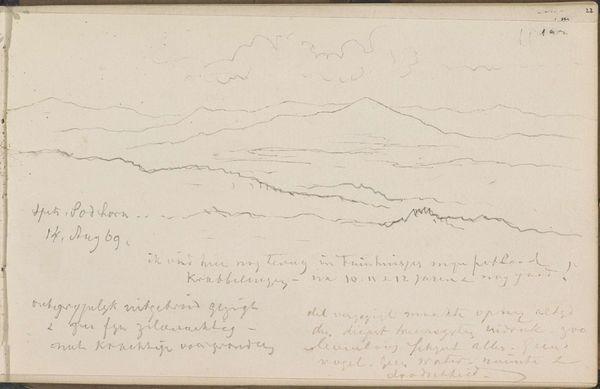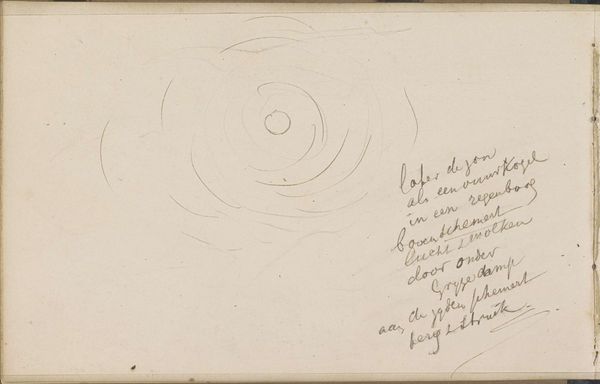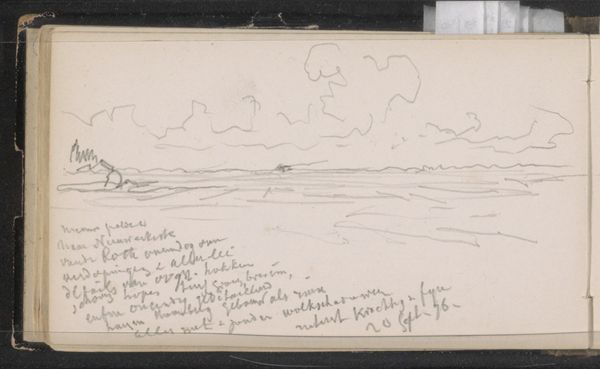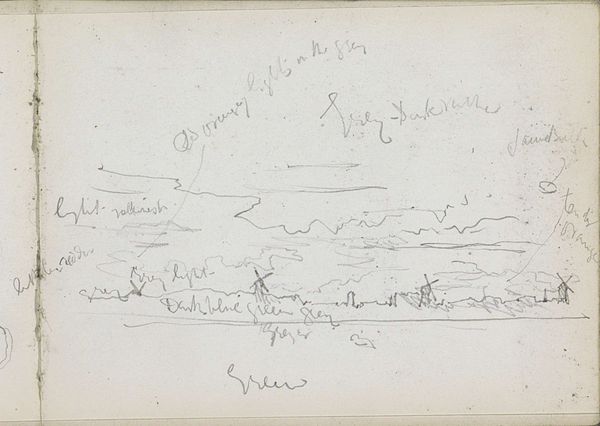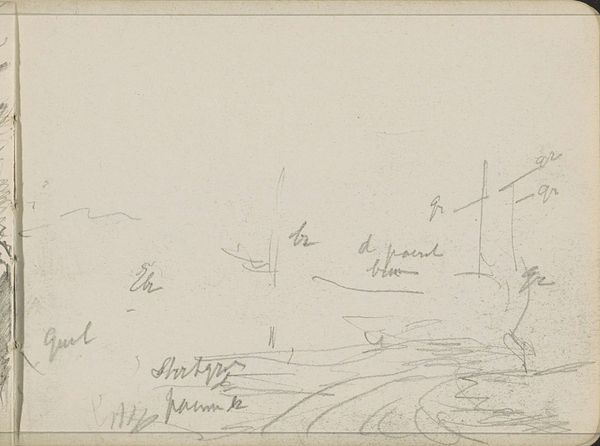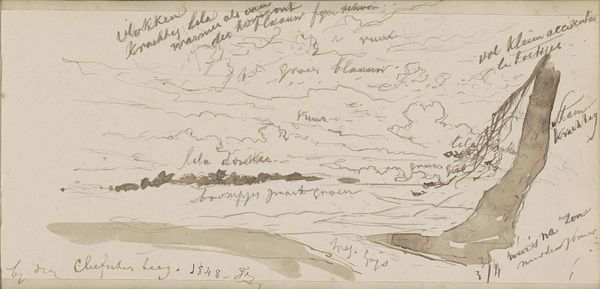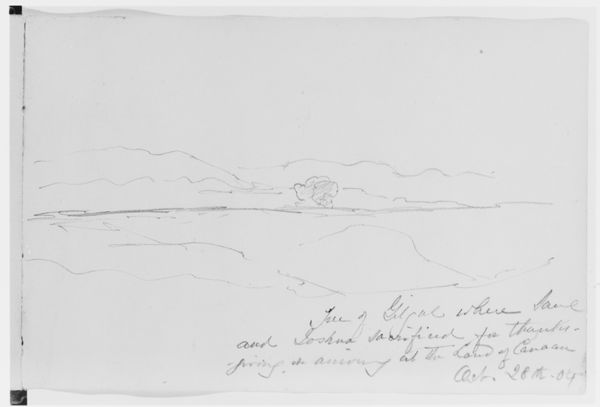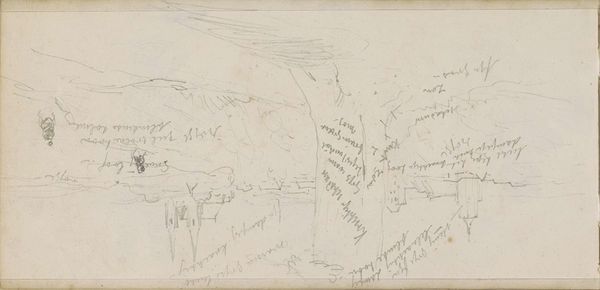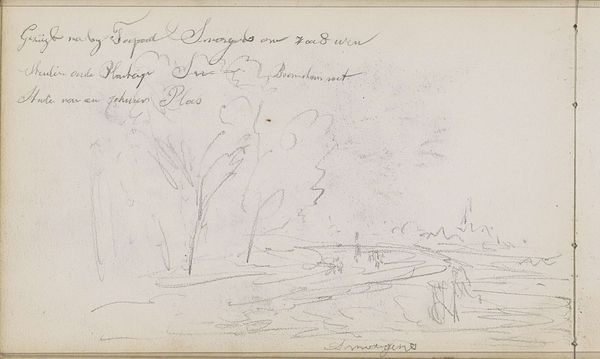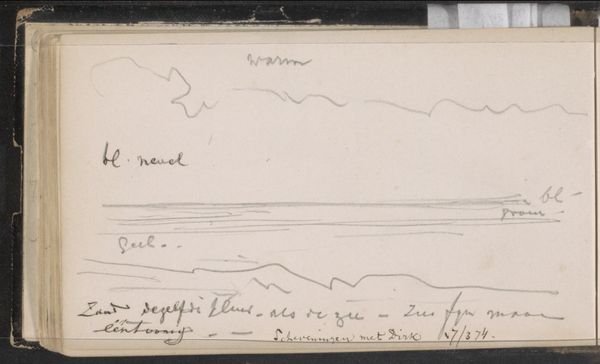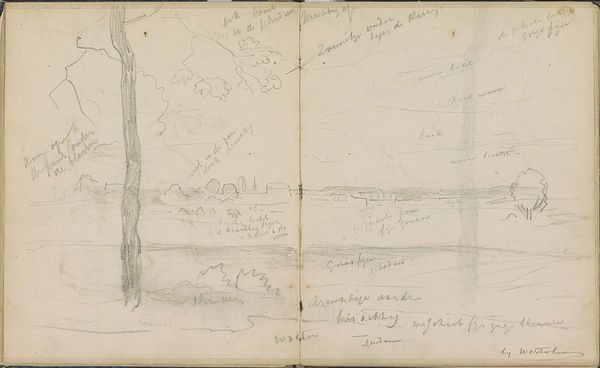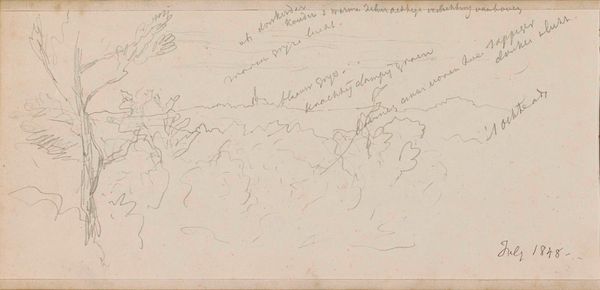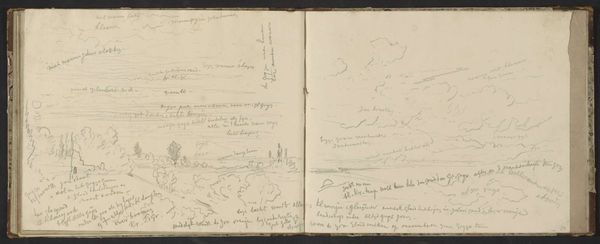
Copyright: Rijks Museum: Open Domain
Editor: This is "Sunrise with a Rainbow" by Johannes Tavenraat, a drawing from 1859, rendered in ink on paper. There’s something very serene and understated about it, like a fleeting moment captured in soft lines. What do you see in this piece? Curator: I see a powerful assertion of the artist's place within the natural world. Think about the context: 1859. Industrialization is rapidly transforming the landscape. Tavenraat, sketching en plein air, seems to be deliberately choosing to focus on the sublime, untamed beauty of nature. But the rainbow… is it just about beauty? Editor: What else could it represent? Curator: Rainbows have long been symbols of hope, promise, and transition. Given the era, and the anxieties surrounding industrial change, the rainbow here could be interpreted as a yearning for a more harmonious future, one where humanity and nature coexist peacefully. This isn’t just a pretty picture; it’s a statement. Also note how he is writing observations directly on the sketch; the embodied nature of his reaction is significant. Do you notice a socio-political meaning embedded? Editor: I didn't initially, but now I see how it pushes back against the dominant narrative of progress at the time. Curator: Exactly. The artwork makes you consider not only the romantic landscape tradition but the way that individual agency expresses their lived experience. Editor: I’m seeing so much more in it now – how the beauty is only one layer of meaning. Thanks! Curator: Absolutely. Looking at art through an intersectional lens always enriches our understanding, allowing us to see these landscapes not just as pretty, but as profound, expressions of human experience and aspirations.
Comments
No comments
Be the first to comment and join the conversation on the ultimate creative platform.
